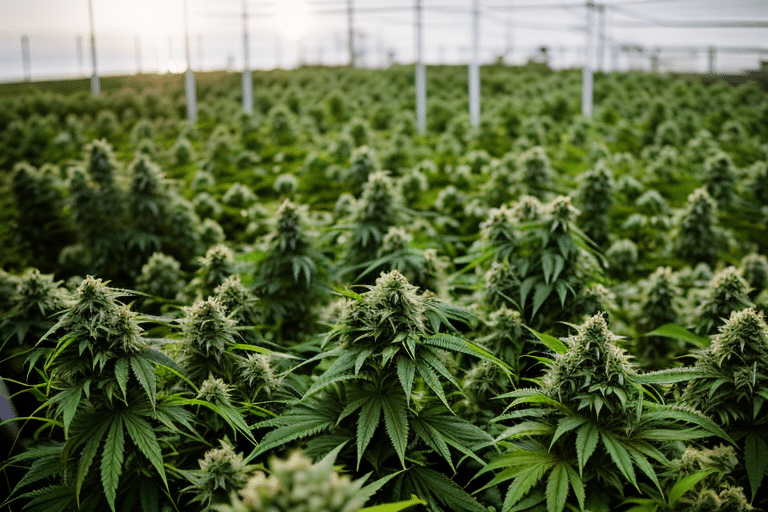Nowadays, people prefer natural ways to improve their health and lifestyle. Thanks to the growing availability of herbal supplements like Delta-8 and Kratom, people have more choices than ever.
You may know that Delta-8 and Kratom have different effects, but you might not know that they can work together. Let’s explore each supplement separately and understand what effects mixing Delta-8 and Kratom may cause and their side effects.
Table of Contents
ToggleWhat Is Delta-8?
Cannabis plants contain more than 100 cannabinoids, including low levels of Delta-8 Tetrahydrocannabinol (THC). When making Delta-8 THC, manufacturers filter hemp extract to produce as much pure CBD as possible. That CBD is combined with acids and solvents to produce Delta-9 THC, which then degrades over time to become Delta-8 THC.
Delta-8 resembles the Delta-9 form of THC, the compound found in marijuana that makes you high. Both have a similar chemical structure and psychoactive qualities. A majority of people find Delta-9 too strong and prefer using Delta-8. Delta-9 is considered almost twice as strong as Delta-8 and is more likely to produce the mental side-effects for which THC is known.[1]
Delta-8 THC products can make you feel relaxed and euphoric without unpleasant side effects. These products come in various forms, including gummies, vape cartridges, infused flowers, and joints.
Do you need custom private label Delta 8 products produced for your CBD business?
SEE WHAT WE CAN DO
Do you need custom private label Delta 8 products produced for your CBD business?
SEE WHAT WE CAN DO
What Is Kratom?
Kratom, a naturally occurring herb, has strong stimulating and sedating effects. Kratom offers many health benefits without dangerous side effects. Natives in Southeast Asia frequently use Kratom as a form of medicine.[2]
Kratom can remedy various conditions, including anxiety and opioid withdrawal. Kratom has three types of strains: white, red, and green.
What Is the Difference Between Delta-8 and Kratom?
While Delta-8 and Kratom share some similarities, they have significant differences that make them appealing to different people. People who seek a more intense experience prefer Delta-8, while people seeking a calmer experience usually choose Kratom.
Delta-8 can treat chronic pain by addressing the underlying cause of the pain. Delta-8 interacts with your endocannabinoid system to reduce the severity of pain. To get the best results, you can safely continue the treatment for several days, weeks, or months.
In contrast, Kratom can help relieve most types of pain. Kratom works fast and effectively by directly agonizing the opioid receptors, which produces a pleasurable sensation. Be aware that long-term use may cause overtolerance and addiction.[3]
What Are the Effects of Delta-8?
Delta-8 produces straightforward effects when used with the proper dosage. Most people say that Delta-8 produces a milder high than Delta-9 THC. The benefits remain the same, including pain relief, less anxiety, and mild euphoria.
People also report feeling more relaxed without the sedating effects of Delta-9. The low potency levels of Delta-8 allow users to enjoy the high without feeling too drowsy.[4]
What Are the Effects of Kratom?
Kratom’s effects depend on the strain and dosage. The effects vary depending on how much you take: higher doses become increasingly sedative, while low doses cause an energy boost.
White Strain. Many users state that the Kratom white strain provides their bodies with the same energy as several strong cups of coffee. The white strain has stimulating properties that improve productivity and cognitive abilities.
Red Strain. The red strain causes high levels of sedation with low levels of stimulation. People use them to relax, induce euphoria, treat pain, and fall asleep.
Green Strain. The green strain offers mild stimulation with lower energizing power. Frequent users state that the green strain provides a smoother, cleaner feeling of energy. Other effects include sedation and stimulation.
Mixing Delta-8 and Kratom
Mixing large doses of Delta-8 or Kratom can cause adverse side effects. Although Delta-8 and Kratom have natural properties, individuals may react to them differently.[5]
Delta-8 and Kratom have multiple uses for medical and recreational purposes. Delta-8 can cause psychotropic effects that affect behavior and mood by making you feel high.
Both Delta-8 and Kratom provide different experiences. People have often wondered if it’s safe to mix the two. While there is little formal research to answer this question, many have done so and have had positive experiences. However, only a personal experience can tell if mixing Delta-8 and Kratom will work for you.
You might also be wondering about mixing kratom and CBD. Before doing this, definitely read our post on Kratom Vs. CBD, to find out everything you need to know about these two substances combined and separate.
Proper Dosage and Ratios
Dosage ratios vary from person to person, but the standard dosage for Delta-8 ranges from 10 milligrams for those just starting out to 150 milligrams for experienced users.[6] Adjust the dose depending on your age, gender, weight, and tolerance level. Those who use Delta-8 and Kratom regularly should know what amount works best.
Kratom’s effects depend on the dosage and amount you consume. These effects remain common for all strains of Kratom.
Low doses will give you a noticeable boost with increased alertness, while a medium dose offers the perfect balance of stimulation and relaxation. Higher doses can potentially alleviate aches and pains.[7]
Before Mixing Delta-8 and Kratom, measure each dosage correctly:
- Beginners should start with low doses to reduce side effects.
- Experiment with the dosages to give you a better idea of the amount you need.
- Do not consume too much at once.
What Are the Side Effects of Delta-8 and Kratom?
Delta-8 and Kratom both have side effects. Unlike Kratom, the user can easily manage and deal with Delta-8’s side effects.
Delta-8 can make you feel sleepy, dizzy, and tired. Serious side effects include hallucinations, vomiting, and a loss of consciousness. Avoid taking large doses to minimize the risk of side effects.[8]
The common side effects of Kratom include confusion, anxiety, nausea, and lethargy. New users should limit their dosage to avoid potential side effects. Also, note that Kratom has addictive properties.
How Do You Take Delta-8 and Kratom?
Although you can take Kratom in many ways, the most popular one involves mixing it with tea. You can combine Delta-8 with any strain of Kratom. Take a capsule or powdered form of Kratom an hour before consuming Delta-8.
Try the Delta-8 gummies but count how many you consume to track the dosage. Do not take too many because the gummies take time to activate. Alternatively, you can use vape cartridges or tinctures to manage dosage ratios.
What Happens When You Mix Delta-8 and Kratom?
Mixing Delta-8 and Kratom can give you the combined benefits of both. As a general rule, you should take these two supplements in moderation. Make sure you only purchase Delta-8 and Kratom from legitimate sources that provide high-quality products.
Consider consulting your physician if you plan to mix Delta-8 and Kratom regularly. Sometimes the effects become too powerful, turning an otherwise enjoyable experience into too much. Start with a low dose and wait to see how it affects you before taking any more.
Conclusion
Recently, Delta-8 and Kratom have gained recognition for their health benefits. To enjoy your experience with Delta-8 and Kratom, pay attention to the above information. Always use common sense and caution when mixing the two.








